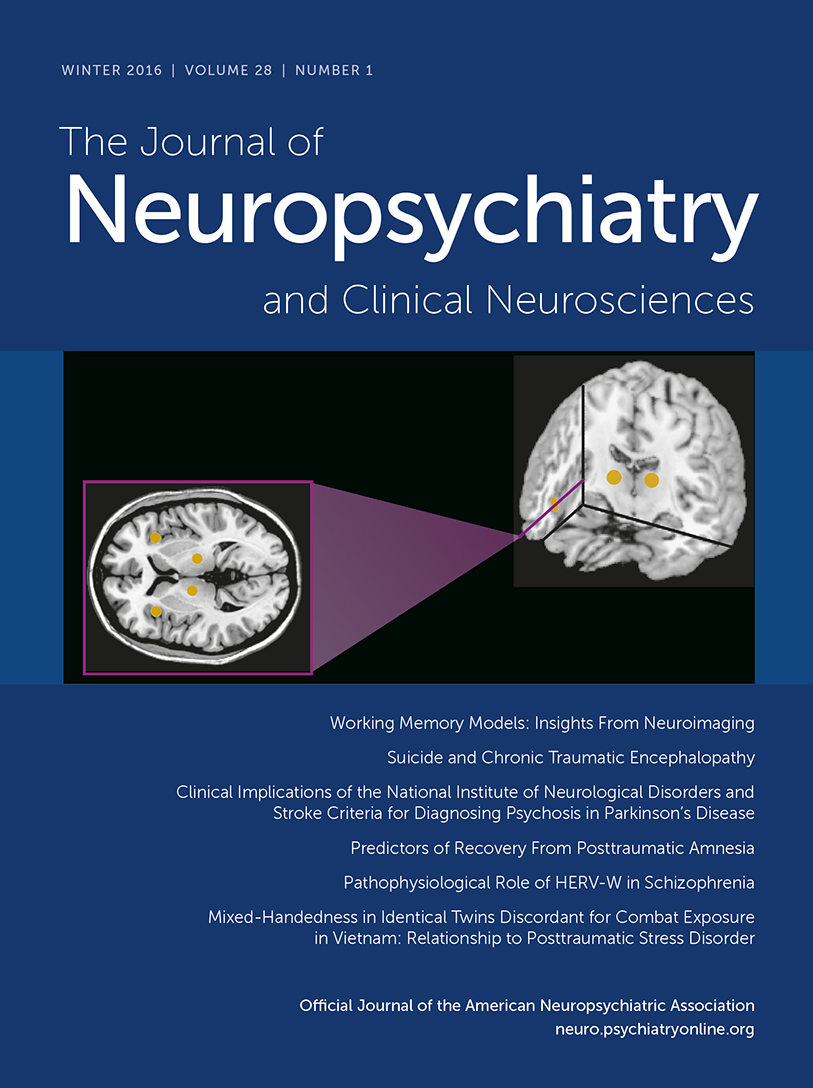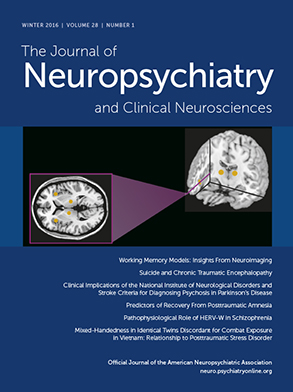To the Editor: Robust literature exists for ketamine’s safety and efficacy as an anesthetic, with recent growth of the literature on its safety and efficacy for treatment-resistant depression.
1 In one report reviewing >8,000 cases of anesthetic ketamine use for children with spastic cerebral palsy, manic symptoms were not reported as a common complication.
2 Similarly, in a review of safety and efficacy for ketamine’s use in treatment-resistant depression, there were no reported cases of mania induction.
1 Our literature search revealed a single case report of a patient with induced manic symptoms during prolonged ketamine infusion for treatment of reflex sympathetic dystrophy.
3 We present a case of a hypomanic-like episode in a pediatric patient with spastic cerebral palsy after receipt of two ketamine administrations for anesthesia with analysis by the Naranjo Adverse Drug Reaction Probability Scale, suggesting a probable causal relationship.
4 Case Report
A 17-year-old young man with a history of cerebral palsy, spastic diplegia (infantile type), developmental delay, epilepsy, vesicoureteral reflux, renal failure, atrial fibrillation, encopresis, and enuresis manifested new-onset self-injurious behavior and agitation. The patient was nonverbal—communication was limited to grunting but with some ability to respond to yes/no questions—and he had low functional capacity. He had no previous psychiatric hospitalizations. Previous medication trials for agitation at an outside hospital included risperidone, guanfacine, lorazepam, carbamazepine, and haloperidol (Haldol) (induced seizure). He was transferred after 76 days to our facility for evaluation in an inpatient child psychiatry unit.
After admission, the patient’s agitation and a urinary tract infection were treated, and these conditions improved with administration of gabapentin, risperidone, guanfacine, carbamazepine, clonazepam, lorazepam (as needed for agitation/anxiety), oxybutynin, nitrofurantoin, omeprazole, and polyethylene glycol 3350. Because of gross dental decay observed by the treatment team, a dental examination was ordered. The patient was anesthetized with intramuscular ketamine on initial examination and, again, 3 days later for treatment and extraction of multiple dental caries without procedural complication.
Two days after the first ketamine treatment, the patient was noted to have new-onset elevated mood, minimal sleep, and increased psychomotor activation, goal-directed activity, and attention-seeking behavior. These symptoms continued on day 3, which included his second ketamine treatment. Noted escalation of symptoms followed the second treatment, with the patient being more talkative than usual and having decreased sleep (1.5–3.5 hours) but increased elevated mood, psychomotor activation, and hypersexuality. The addition of ciprofloxacin was the only change in standing medications, with diphenhydramine, ondansetron, and acetaminophen added as as- needed medications. Symptoms subsided during the following week with a return to regular sleep patterns at day 5, although elevated mood persisted until day 9 after initial symptom onset. The patient was stable for discharge at 15 days after symptom onset. However, he was readmitted for agitation 2 days later, where he remained hospitalized for agitation for several months. We applied the Naranjo Adverse Drug Reaction Probability Scale to the case of this patient, with a score of 6: 1 point each for previous report of this reaction and improvement when drug was discontinued, and 2 points each for appearance of adverse reactions after drug administration and readministration.
4 This corresponds to a probable relationship between onset of hypomanic-like symptoms and treatment with ketamine.
Discussion
A probable relationship was observed between onset of hypomanic-like symptoms and treatment with ketamine in a child with spastic cerebral palsy. Given the dearth of previous incidence of ketamine-induced mania or hypomania in the literature, the specifics of this case should be considered in similar presentations with an indication for ketamine.
The authors speculate that a phenomenon occurred, which is not unrelated to paradoxical disinhibition observed with anxiolytic treatment of patients who are severely neurologically compromised. Perhaps ketamine’s lasting antidepressant effect extends to adverse disinhibition in those with right dorsolateral prefrontal cortex compromise, given that region’s postulated role in impulsivity.
5 Further study is necessary to determine whether the lasting positive outcomes in patients with treatment-resistant depression may be mirrored by lasting adverse events in those with vulnerabilities similar to the case of our patient.
We acknowledge that this report has limitations. No formal rating scale of manic symptom severity was used to characterize this condition. In addition, based on DSM-5 criteria for mania and hypomania, it was difficult to assess whether the patient met the full criteria for a manic or hypomanic episode because he was nonverbal and unable to articulate his symptoms. By observation, it was possible to determine that he had several days of elevated mood, being more talkative than usual, and increased goal-directed activity. He slept significantly less than usual but was not able to express whether he experienced a decreased need for sleep. In addition, it was not possible to determine whether he felt his thoughts were racing. Because of these limiting factors, the patient is described as experiencing hypomanic-like symptoms.
We acknowledge that possible confounding factors make the direct link between ketamine and mania less precise. Ketamine has the potential to interact with other medications that the patient was concurrently taking. In addition, some medications that he was taking may interact with each other, producing CNS side effects. That said, however, according to online drug interaction reports, manic symptoms—although possible—are not common.
6 Although the patient had never exhibited manic symptoms before ketamine exposure, it should be noted that he has underlying neurological conditions (epilepsy and cerebral palsy) and behavioral disturbances (agitation and self-injurious behavior) that are risk factors for mania.
Although excited delirium was considered, a search of PubMed for “excited delirium ketamine” revealed only instances of treatment of such states with ketamine.
7 Furthermore, the duration and onset of the symptoms in this patient are not consistent with ketamine-induced delirium, because extensive data exist for resolution of even dissociative- and psychotic-related symptoms by 4 hours.
1Despite these acknowledged limitations, the case of this patient suggests that the effects of ketamine on those with cerebral lesions require careful consideration. With the increasing therapeutic use of ketamine for treatment of neuropsychiatric conditions and with the advent of a new class of NMDA receptor antagonist–based antidepressants, we believe that this report would be of value to neuropsychiatrists who treat psychiatric disorders (and symptoms) in patients with neurological illnesses and to neurologists who treat patients with CNS lesions and dysfunctions of multifarious etiologies.
Acknowledgments
The authors acknowledge Jamie L. Caraffa, California State University at Northridge, for assistance in developing the original manuscript.

